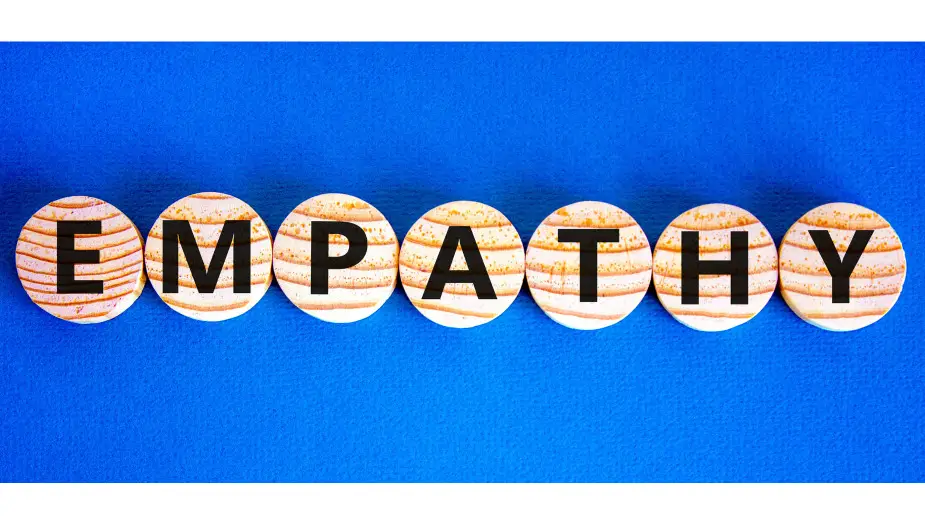Delve into the enigmatic world of color psychology as we explore whether the hue blue truly embodies empathy. Let’s embark on a chromatic journey!

Empathy And The Color Blue
Picture this – you’re strolling through an art gallery, captivated by the serene shades of blue that wash over Monet’s Water Lilies. Instantly, you feel a sense of calm, and perhaps even a touch of melancholy.
But what if I told you that blue isn’t just about tranquility, but also empathy?
In this post, we’ll dive into the depths of color personalities and unravel the mystique surrounding blue as the embodiment of empathy. Ready for a chromatic adventure? Let’s get started!
The Enigma of Blue
Blue, often regarded as the color of serenity and stability, has a profound impact on our emotions and state of mind. Let’s delve into the enigmatic world of blue:
- Calmness and tranquility: Blue is known to induce feelings of calm and relaxation, which is why it’s often used in spaces that promote tranquility, such as spas or bedrooms.
- Dependability and trust: Blue is synonymous with reliability and trustworthiness. This association can be seen in various industries, from banking to technology, where blue is heavily utilized.
- Sadness and melancholy: The expression “feeling blue” stems from the color’s connection to sadness and introspection. This correlation is said to have originated from the tradition of sailors wearing blue uniforms when mourning the loss of their shipmates.
Empathy Unmasked In The Color Blue

Empathy is the ability to understand and share the feelings of another person. It’s a crucial aspect of human connection and communication. Let’s unmask the intricacies of empathy:
- Cognitive empathy: This type of empathy refers to the intellectual understanding of another person’s emotions. It enables us to comprehend someone’s perspective without necessarily experiencing their feelings.
- Emotional empathy: Emotional empathy, also known as affective empathy, is when we genuinely feel and share the emotions of others. This form of empathy allows for deep connections and emotional support.
- Mirror neurons: These specialized brain cells play a pivotal role in empathy. They enable us to mimic and internalize the emotions of others, helping us relate to their experiences. Mirror neurons are responsible for the contagious nature of emotions such as laughter and sadness.
Blue: The Empathetic Hue?
While the idea of blue being the color of empathy might seem far-fetched, there are compelling reasons to believe it could be true:
- Trust and empathy: Trust is a vital component of empathy. When we trust someone, we are more likely to open ourselves up to their emotions and experiences. Since blue is associated with trustworthiness, it’s plausible that it could enhance empathic responses.
- Blue’s calming effect: As mentioned earlier, blue has a soothing and calming influence on people. This tranquility can create an atmosphere conducive to empathy, as it allows individuals to feel comfortable and safe when expressing their emotions.
- Cultural associations: In some cultures, blue is linked to spirituality and healing. These connections could also contribute to the idea that blue fosters empathy and understanding among individuals.
